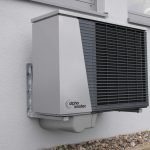Understanding Gerbil Exercise Needs
Gerbil exercise is crucial for maintaining optimal gerbil health. Without adequate activity, gerbils may experience a range of health issues, including obesity, poor muscle development, and behavioural problems. Regular exercise helps to prevent these problems and contributes to a longer, healthier life for your gerbil.
Importance of Exercise for Gerbils
Daily exercise is essential because it not only supports physical health but also enhances the gerbil’s mental well-being. Engaging in regular physical activity helps to reduce stress and prevent anxiety-related behaviours, such as gnawing on cage bars.
In parallel : Creating a Calming Haven: Expert Advice for Easing Hyperesthesia in Cats
Recommended Daily Exercise Duration
For gerbils, it is generally recommended that they have access to exercise opportunities, like a running wheel, for a significant portion of the day. A gerbil wheel provides an excellent way to ensure that your pet stays active, offering a convenient and effective form of exercise.
Behavioral Benefits
Integrating a routine of regular physical activity into a gerbil’s life can have numerous behavioural benefits. It encourages them to exhibit natural instincts, such as running and burrowing. A well-exercised gerbil is typically more sociable and displays less aggressive or anxious behaviour. Hence, ensuring your pet’s exercise needs are met is crucial for both their physical and emotional health.
Also to discover : The Ultimate Guide to Choosing the Best Nutritional Supplements for Your Senior Parrot
Key Features of a Gerbil Wheel
When selecting a gerbil wheel, understanding its key features is crucial to ensure both safety and functionality for your pet. Whether your gerbil is a tiny dwarf or a slightly larger breed, the essential size considerations play a significant role in your choice. A wheel that is too small can cause spinal issues, while one that’s too large may not be used effectively.
Material Safety and Design
The material safety and design of the wheel should prioritize your gerbil’s well-being to prevent injuries. Metal or wire wheels can lead to foot injuries or entrapment. Thus, it’s advisable to opt for solid surface wheels, which offer a smoother and safer running experience. Additionally, ensuring that the wheel’s design is free from sharp edges or detachable parts is crucial for preventing harm.
Stability and Base Construction
A stable wheel is essential for your gerbil’s enthusiastic running sessions. The importance of stability and base construction cannot be overstated. A well-constructed base ensures the wheel doesn’t tip over or wobble during use, reducing the risk of accidents. Secure base designs provide peace of mind by keeping the wheel securely in place, allowing your gerbil to exercise confidently and safely.
Types of Gerbil Wheels
Choosing the right gerbil wheel is pivotal for ensuring your pet’s exercise needs are met without compromising safety or comfort. There are several types of gerbil wheels available, each with its own unique advantages and drawbacks. Understanding these differences can help you make an informed decision tailored to your gerbil’s preferences and health requirements.
Silent Wheels
Silent wheels are designed to minimize noise during use, making them an excellent option for pet owners who house gerbils in shared or quiet living spaces. These wheels often feature a smooth, solid surface without crossbars, reducing the likelihood of foot injuries and noise. For gerbils that are active during the night, a silent wheel ensures their exercise routine does not disrupt the household.
Upright Wheels
Upright wheels resemble traditional pet exercise wheels and are typically mounted vertically. They can be a great fit for gerbils who enjoy the natural running posture these wheels promote. Upright wheels often take up less floor space and are easy to incorporate into existing habitats. However, ensuring proper balance and avoiding wobbling with these types is essential to prevent accidents.
Horizontal Wheels
Horizontal wheels, also known as saucer wheels, provide a unique running experience, allowing gerbils to run sideways. These wheels are an excellent option for more adventurous pets and those who may not initially adapt to traditional wheels. While they require more space, horizontal wheels can greatly enrich a gerbil’s environment, offering a different form of movement that supports their natural instincts. However, some gerbils might prefer upright wheels, making it crucial to observe your pet’s behaviour to determine the best fit.
Benefits of Proper Exercise for Gerbils
Exercise is vital for a gerbil’s overall well-being, significantly reducing stress and anxiety levels. Regular physical activity helps gerbils engage in their natural behaviors, such as digging and running, which in turn diminishes the likelihood of stress-induced habits like excessive gnawing. Moreover, keeping your gerbil active can lead to a more sociable and content pet.
A direct connection exists between exercise and a gerbil’s longevity. Just like in many animals, consistent movement helps manage weight and improves cardiovascular health, supporting a longer lifespan. By integrating exercise into their daily routine, you not only enhance your gerbil’s immediate well-being but also potentially extend their life.
Supporting natural instincts is another remarkable benefit of exercise for gerbils. Activities like running on a wheel or exploring a dig box mimic the physical demands these creatures face in the wild. Satisfying these instincts not only improves physical health but also ensures a psychologically fulfilling environment for your pet. Providing platforms for such behaviors helps stave off boredom and its associated negative behaviors, promoting a healthy and happy gerbil.
Safety Considerations When Choosing a Wheel
Ensuring safety for gerbils when selecting their exercise wheel is paramount. A primary step is identifying potential wheel hazards, which include pinch points or sharp edges that could harm your pet. Opt for solid surface wheels to minimize risks, as these designs prevent foot and tail injuries often associated with metal or barred wheels.
Regular inspections and maintenance of the wheel are necessary to ensure it remains in optimal condition. With frequent use, wear and tear are inevitable, and components may become loose or damaged. By routinely checking the wheel for stability and smoothness, gerbil owners can promptly address any issues, preventing accidents.
For added safety, securing the wheel firmly within the habitat is crucial. Follow tips for securing the wheel, such as attaching it securely to the habitat walls or ensuring that the base is weighted and stable. These precautions will help maintain a safe environment where your gerbil can enjoy exercising without the risk of the wheel tipping over or wobbling.
Recommendations for Gerbil Wheels
Selecting the best gerbil wheels involves considering various factors, including brand reputation, features, and user feedback. Leading the market, several top-rated products showcase standout features that enhance gerbil exercise routines. Brands known for their innovation prioritize pet safety, offering solid surface wheels that provide both comfort and security during usage.
When exploring price range considerations, it is important to balance cost against quality. High-end gerbil wheels often feature durable materials and silent operations, vital for a peaceful home environment. Meanwhile, budget-friendly options may suffice but might lack additional features, such as advanced construction that prevents foot injuries. Evaluating your requirements and budget will help determine the most suitable option for you.
User reviews and testimonials can offer invaluable insights into the performance and longevity of different wheel options. Many users highlight the importance of an easy-to-clean design and robust construction, favouring products that withstand active use while minimizing maintenance efforts. Paying attention to fellow gerbil owners’ experiences allows you to make a more informed decision tailored to both your pet’s needs and the dynamics of your living space.
Setting Up and Maintaining the Gerbil Wheel
To provide the best experience for your gerbil, proper gerbil wheel setup is essential. Begin by selecting an optimal location within the gerbil’s habitat that allows for uninterrupted movement and doesn’t obstruct other accessories. Ensure the wheel is placed at a comfortable height for your gerbil to easily enter and exit. Securing the wheel firmly is crucial to prevent tipping, which might discourage your pet from using it.
Maintenance tips are vital for ensuring the wheel’s longevity and safety. Regularly check for any damage, such as cracks on the surface or loose components. This step is necessary to avoid potential injuries and to maintain the wheel’s stability. Tightening screws and aligning parts can prevent wobbling, thus contributing to a more enjoyable exercise session for your gerbil.
A routine cleaning schedule enhances both hygiene and wheel functionality. Use mild cleaning solutions and a soft brush to eliminate dirt and debris without damaging the material. Rinse thoroughly and ensure the wheel is completely dry to prevent mildew and odors. Frequent cleaning not only extends the wheel’s lifespan but also promotes a healthy environment for your pet.
To further enhance wheel durability, consider using lubricants on moving parts to minimize friction and wear. Avoid oil-based products that can harm your gerbil; instead, stick to pet-safe alternatives. By following these practices, you can ensure the wheel remains a reliable and enjoyable outlet for your gerbil’s exercise needs.





